Policy Formulation
Public Policy Change
 |
| The Political Formulation of Policy Solutions: Arguments, Arenas, and Coalitions |
Here's the path forward of what the next module willfocus
on:
First, we will delve into the policy formulation stage, which is called incrementalism. Incrementalism addresses conflicting interests among stakeholders by focusing on gradual, incremental changes rather than drastic or comprehensive overhauls. This approach acknowledges that complex conflicts often involve multiple actors with diverse interests, values, and information. We also cover the core concepts of policy design and some key references that can guide your work.
Second, we will delve into the decision-making phase of the
policy process and some crucial skills in selecting what policy changes or reforms
to ponder and strive for. More specifically, we will delve into the world of
policy options analysis, examining the frameworks that can be used to consider
a specific policy idea to guarantee that it aligns with multiple aspects.
 |
| Israel and the Palestinian Refugee Issue: The Formulation of a Policy, 1948-1956 |
Let's explore the policy formulation process and how public
policy changes. Data has shown that the majority of new public policies in the
US and other democracies involve updates to existing policies, laws, and
regulations. Policy formulation typically involves building upon existing
policies that are already established. This is a major driver that the policy –
making process is a cycle that cycle back repeatedly. Once more, Public policy
in Western systems typically evolves through refinement of existing policies
and then making small, incremental adjustments rather than comprehensive
reforms. Incrementalism is the term used by political scientists to describe
this process. There are several factors that incremental change is a common
force in public policymaking. This encompasses the number and plurality, or a
wide range of stakeholders and political actors, makes it difficult to
implement major transformations. As previously discussed, It's tough when
people gather and reach a mutual understanding on the methods of implementing
change. However, there are also obstacles
in fostering agreement among diverse communities to align on the
objectives of public policy, how to manage when faced with trade-offs, how to
cope benefits and burdens, etc. The lack of capacity to forecast the outcomes, and
the effects of big bold policy changes or new innovative policy approaches also
directs policy decisions that focus on incrementalism. After all, the
preferences of various stakeholders and frequently the public at large are for
small, continuous efforts rather than slow, deliberate, yet larger reform. Let's
explore some real-life examples using distinct approaches to policy change integrated
within policy formulation.
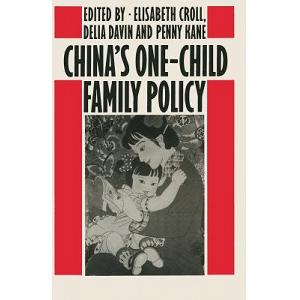 |
| China's One-Child Family Policy |
Let's consider a couple of examples, First, let’s examine the
problem of health insurance coverage in the United States. The majority of the
US population does not have health insurance. Health insurance is expensive for
many and typically tied to employment. This approach is not typical of the
approaches taken by other high-income countries. A comprehensive system of
public health insurance programs and safety net health care providers has been
established in the United States over decades. These programs include Medicare
and Medicaid, the Children's Health Insurance Program, federally funded
community health centers, and other initiatives. These programs are constantly
evolving through incremental policy changes. In 2010, the US Congress passed
the Patient Protection and Affordable Care Act, which is often referred to as
Obamacare. Although the law was a significant piece of legislation, this law
maintained the distinctive US approach to health insurance which relies heavily
on employer-based coverage, coupled with public programs that maintain
significant burdens for beneficiaries intact. For many, this reform was a
significant shift, with both good and bad consequences. In reality, it was a
collection of small, incremental changes.
Next, let's turn our attention to India and explore its
transportation policy development. There are many transportation-related
problems in India, which features a large and rapidly expanding developing
country. This encompasses problems related to mobility or getting people moved
around, problems related to congestion, injury, pollution, not to mention
issues related to climate change. Transportation policy in India is subject to
frequent revisions and updates at local, state, and national levels, reflecting
shifting priorities and resource allocations. To summarize, there are two main
points. First, public policymaking is a cyclical process that addresses
societal issues and constantly evolving and improving over time. Second, policy
changes are typically incremental, with small adjustments made over time rather
than sweeping reforms.
Basics of Policy Design
An example a complex policy approach responding to a complex problem in the United States. The policy example here is the Black Maternal Health Momnibus Act of 2021, a comprehensive legislative package introduced by Representative Lauren Underwood of Illinois, a University of Michigan nursing school alumna. This bill combines 12 distinct policy approaches to address the pressing issue of racial disparities and maternal mortality in the United States, highlighting the importance of a multifaceted approach to tackle complex health challenges. Maternal mortality rates for black women are significantly higher than those for white women. The inequity has been increasing, rather than decreasing. The 12 different bills that are in the overarching Omnibus Act focus on things including improved data collection and quality of health care measures, a number of special populations of people at increased risk for maternal mortality, including women who are incarcerated while pregnant, and people with substance abuse and addiction problems.
 |
| Social Justice |
There are many more aspects to consider in policy design.
Reading below includes a variety of sources for discovering policy ideas, existing
policies that have been proposed or are being considered in various places and
also featuring the detailed language of policies that have been adopted.
Reading
Good Sources of Information on Public Policies: An Evidence-Based Policymaking Primer
Policy Priorities of Interest to You
Policy Reform: Implement policies that ensure affordable
housing for low-income families, such as increasing funding for housing
programs, expanding rent control measures, and promoting community land trusts.
This can help reduce housing costs and improve living conditions for vulnerable
populations.
Healthcare Coverage:
Policy Reform: Enhance healthcare coverage by expanding
Medicaid eligibility, simplifying enrollment processes, and increasing
financial assistance for low-income individuals. This can help more people
access affordable healthcare services and reduce healthcare disparities.
Education:
Policy Reform: Implement policies that make higher education
more affordable, such as free or reduced tuition for low-income students,
increased funding for public education, and programs that support student loan
forgiveness. This can help increase access to education and reduce financial
burdens on students and families
For each policy, the following policymakers have the power
or authority to act on the policy:
Affordable Housing:
- Ministry of Public Works and Public Housing (MoPWH): The MoPWH is responsible for implementing policies related to affordable housing, such as the Housing Finance Liquidity Facility (FLPP) and the public housing savings program (Tapera).
- Government Regulation No. 25 of 2020: This regulation outlines the Tapera program, which aims to provide affordable housing by collecting compulsory savings from the workforce segment.
Healthcare Coverage:
- Government of Indonesia: The government has made reducing the housing backlog and delivering affordable housing an explicit policy priority through initiatives like Satu Juta Rumah (One Million Homes).
- Development Partners: Organizations like the Department for Foreign Affairs and Trade (DFAT) and the Asian Development Bank (ADB) provide critical support to the government in advancing the housing sector reform agenda.
Education:
- Ministry of Education: The ministry is responsible for implementing policies related to education, such as free or reduced tuition for low-income students and programs that support student loan forgiveness.
- State Lawmakers: State lawmakers can pass laws and allocate funds for education, ensuring that all individuals have access to basic necessities like housing, healthcare, and education
Affordable Housing
Formal Policy Examples:
- Government Regulations: Laws and regulations passed by legislative bodies, such as zoning laws and building codes, which ensure that housing developments meet specific standards.
- Executive Orders: Directives issued by the head of state or government, often related to specific issues like affordable housing initiatives or urban development projects.
- Judicial Decisions: Court rulings that establish legal precedents and shape the interpretation of laws related to housing, such as eviction procedures or tenant rights.
Informal Policy Examples:
- Community-Based Initiatives: Local community groups and non-profit organizations that work together to develop affordable housing projects, often through partnerships with government agencies.
- Private Sector Involvement: Companies and organizations that invest in affordable housing projects, either through direct construction or by providing financial support.
- Informal Settlements: Unregulated, unauthorized housing developments that emerge due to the lack of affordable housing options in formal markets.
Healthcare Coverage
Formal Policy Examples:
- Government Programs: Public health insurance programs, such as Medicaid or Medicare, which provide healthcare coverage to specific groups.
- Legislation: Laws that regulate healthcare, such as the Affordable Care Act (ACA) in the United States, which expanded healthcare coverage to more people.
- Regulatory Agencies: Government agencies responsible for enforcing healthcare regulations, such as the Centers for Medicare and Medicaid Services (CMS) in the United States.
Informal Policy Examples:
- Community Health Initiatives: Local community-based programs that provide healthcare services, often through partnerships with government agencies or non-profit organizations.
- Private Health Insurance: Companies that offer private health insurance plans, which may not be regulated by government policies.
- Informal Healthcare Systems: Unofficial healthcare systems that operate outside of formal regulations, such as traditional medicine practices or informal healthcare networks.
Education
Formal Policy Examples:
- Government Regulations: Laws and regulations passed by legislative bodies, such as education funding laws or curriculum standards.
- Executive Orders: Directives issued by the head of state or government, often related to specific issues like education reform or school funding.
- Judicial Decisions: Court rulings that establish legal precedents and shape the interpretation of laws related to education, such as school desegregation cases.
Informal Policy Examples:
- Community Education Initiatives: Local community-based programs that provide educational services, often through partnerships with government agencies or non-profit organizations.
- Private Education: Companies that offer private educational services, such as tutoring or online courses, which may not be regulated by government policies.
- Informal Learning Systems: Unofficial learning systems that operate outside of formal regulations, such as apprenticeships or informal mentorship programs.
- Formalization: Formal policies are officially recognized and codified, while informal policies are not.
- Structure: Formal policies follow a clear hierarchy and formalized rules, whereas informal policies are based on social networks and relationships.
- Accountability: Formal policies are enforced through formal institutions, whereas informal policies rely on personal relationships and social norms.
- Effectiveness: Formal policies are designed to ensure consistency and transparency, while informal policies can be more flexible but may lack accountability.
What policy levers are involved?
Affordable Housing
Zoning and Development Policies:
- Rental-Only Zoning: Encourage rental-only zoning to preserve and expand rental stock.
- Inclusionary Zoning: Mandate a portion of new developments to be allocated to affordable housing.
- Streamlining Development Processes: Simplify the process for developers to build affordable housing.
Financial Tools:
- Fees, Charges, and Taxes: Implement fees and charges that support affordable housing initiatives.
- Development Fees and Charges: Use these fees to fund affordable housing projects.
- Density Bonuses & Amenity Contributions: Offer incentives for developers to include affordable units.
Tools for Affordable Housing Protection and Creation:
- Rental Conversion Policies: Prevent the conversion of rental units into non-rental tenure.
- Tenant Assistance Policies: Protect tenants at risk of displacement due to major renovations or redevelopment.
- Land and Housing Acquisition: Use municipal land for affordable housing projects.
Healthcare
- Location-Based Policy Levers: School-Based Services: Provide health services within schools to increase utilization and acceptability. Integrated Care Models: Integrate healthcare services within schools to enhance access and utilization.
- Insurance-Based Policy Levers: Payment Levers: Implement payment mechanisms such as fees and capitation to influence healthcare utilization.
- Organizational Policy Levers: Regulatory Levers: Govern healthcare provider behavior through regulations.
- Community Education Policy Levers: Social Marketing: Educate the community about healthcare services through social marketing campaigns.
Education
- Location-Based Policy Levers: School-Based Services: Provide educational services within schools to enhance access and utilization.
- Insurance-Based Policy Levers: Payment Levers: Implement payment mechanisms such as fees and capitation to influence educational utilization.
- Organizational Policy Levers: Regulatory Levers: Govern educational provider behavior through regulations.
- Community Education Policy Levers: Social Marketing: Educate the community about educational services through social marketing campaigns.
- Tax Policy - Tax Expenditures: Restructure tax expenditures to benefit low-income households more, such as changing the mortgage interest deduction to a refundable credit. Tax Strategies: Implement a permanent first-time homebuyer’s tax credit or a “first-time home buyers savings plan” to help lower-income households.
- Community Engagement Policy Levers: Voluntary International Standards: Incentivize compliance through international standards and direct regulation. Multi-Stakeholder Dialogues: Engage with civil society and state actors to monitor and discuss policy developments.
- Alternative Oversight Mechanisms : HUD’s Office of Housing Counseling: Refocus counseling agencies on helping households select homes in low-poverty, high-opportunity locations. State and Local Programs: Review and refine programs to ensure they promote economic mobility for low-income families and families of color.
- Payment and Incentives Policy Levers - Formal Incentive Structures: Implement outcomes-based funding and other mechanisms to promote accountability.
- Educational Policy Levers: Social Marketing: Educate the community about healthcare and educational services through social marketing campaigns
What kind of an impact do you think your
priority policies would have?
These policy levers can have a significant impact by:
- Increasing Affordable Housing: By implementing zoning and development policies, financial tools, and tools for affordable housing protection and creation, more affordable housing options will become available.
- Enhancing Healthcare Access: By providing school-based services, integrating healthcare services within schools, and implementing payment mechanisms, healthcare utilization will increase.
- Improving Educational Opportunities: By providing school-based services, integrating educational services within schools, and implementing payment mechanisms, educational utilization will increase.
- Promoting Economic Mobility: By restructuring tax expenditures, implementing tax strategies, and promoting community engagement, economic mobility will be enhanced.
- Increasing Transparency and Accountability: By implementing formal incentive structures and educational policy levers, transparency and accountability will be increased.
Policy Design: Practitioners Perspectives
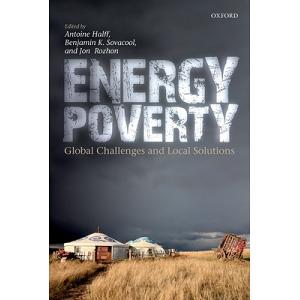

When the American Family Act was introduced, He recall many people describing it as a "pie in the sky" idea. He knew that implementing a child allowance in the United States was a long shot, but as an academic, He felt it was important to discuss the idea. The concept of the American Family Act gained steam over time. What initially seemed like an impossible task became increasingly feasible as more policymakers expressed support for the bill. Advocates and Congress persisted in building support for the American Family Act, steadily increasing its popularity over time. When the COVID-19 pandemic struck, presidential candidate Joe Biden was seeking ways to support families with children during the challenging period. President Biden included the American Family Act in the American Rescue Plan, which was enacted into law in 2021. What happened was, Child poverty rates plummeted, and food hardship among families with children reached an all-time low. Families experienced significant improvements across multiple metrics.
Policy Options Analysis
Prospective Policy Analysis: What Should We Do? (Part 1)
Prospective Policy Analysis: What Should We Do? (Part 2)
Next, incentivize private developers to build more affordable housing. Low-interest loans can be provided to private builders to encourage them to build more low-income housing. Another policy option is to prevent displacement by assisting landlords with code enforcement costs, ensuring that landlords can maintain their properties without being forced to raise rents. There are numerous policy options beyond the ones mentioned, and many more can be explored. The first step in our analysis is to determine which policy options are actually on the table and being considered by decision-makers. A small and manageable set of options is preferable to a large and complex one.
The status quo option is often a default choice, where the current situation is maintained without change. Following this, we will evaluate policy options A and B, typically in comparison to the existing status quo. First, we narrow down the policy options to a reasonable number for analysis. This selection is typically made by stakeholders and decision-makers, not by the analyst. Following this, we assess each policy option based on a set of measurable criteria, comparing and contrasting. In the context of housing, there are several key factors we could consider, including the following: We could analyze, compare and contrast our policy options based on metrics such as housing stability rates, eviction rates, affordability levels, availability of low-income rental units, homeless population numbers, and commuting times and distances. We will evaluate our three options against all of these criteria. Additionally, we could evaluate the impact of each option on segregation. Do these policy options increase or decrease the racial segregation? Another concern in many cities is racial residential segregation, which we can quantify using tools like the Gini Index or the Index of Dissimilarity.
We will not conduct a comprehensive housing policy options analysis. In summary, here are the main points. To begin with, policy options analysis is heavily reliant on data and technical expertise, there’s an important role for data analysts. However, data alone cannot dictate policy decisions. This is because policy decisions inherently involve trade-offs and value judgments about those trade-offs. Policies always involve both benefits and burdens, and these are often distributed in an unfair manner. Policy options analysis is a crucial step in the policy-making process because it provides vital information and data to inform decision-makers. It is not a standalone solution.
Introduction to Forecasting and Policy Simulation Modeling
- Microsimulation models are also known as Monte Carlo or risk analysis models.
- Discrete event simulations models
- Agent-based modeling and simulation
- System dynamics simulation models
We will primarily concentrate on microsimulation models, which are the primary tools used in policy analysis. What is the definition of a microsimulation model? Microsimulation models are computer-generated forecasts that simulate the effects of government programs and policies on individual members of a population under various policy interventions. By micro units, to look at what the effects of policy changes might be on individuals, households, and small-scale organizations such as businesses.
These policy micro simulation models are primarily used to analyze the impact of policy changes. However, demographic processes such as birth, death, and migration are typically incorporated into these models. The essential step in using the simulation is identifying its objectives. This can be categorized under the heading of projecting future outcomes under the status quo or different policy scenarios. The goal is to create a predictive tool that helps decision-makers forecast the future. As a team member, it is crucial to understand the assumptions that will be incorporated into the model to accurately forecast the future effects of new policies or programs. "These assumptions consider not only the effectiveness of a policy change but also its potential to create new or exacerbate existing inequities. There will be concerns about the cost issues and broader societal impacts. Additionally, these microsimulation models are used to assess the potential effects of various types of shocks, economic shocks like a recession or rising inflation, there could be environmental shocks like a natural disaster of some sort or other social shocks, rather than intentional policy changes. Models can be used to predict these kind of things as well.
Example: Mexico Pensions for the Poor Case Study
- Step 1: Verify and define the problem in detail.
- Step 2: Identify a set of reasonable policy options or alternatives to consider.
- Step 3: We need to establish the criteria for evaluating the different policy options or alternatives.
- Step 4: We need to analyze the policy alternatives using the criteria established in Step 3.
- Step 5: We need to communicate the outcomes of our analysis to decision-makers.
This report may or may not include our own recommendation,
based on the analysis.
Step 1: Identify the problem. The context is that the
Mexican Congress aims to allocate resources to address poverty among older
people in Mexico, particularly those in rural areas. Data indicate that the
urban poverty rate among individuals aged 65 and older was 35.6% at this time,
with fewer than 10% of this population receiving a pension. Data indicate that
the rural poverty rate among individuals aged 65 and older was 57.7% at this
time, with less than 1% of this population receiving a pension. The Mexican
Congress aims to enhance income security and alleviate poverty among
individuals aged 70 and older by offering monthly pensions, with a focus on
rural areas.
Step 2: policy options analysis requires to explore various
eligibility criteria options, as this aspect of the policy was intentionally
left open-ended by Congress. The President and his senior staff have proposed
three distinct options for establishing eligibility criteria for the new
pension program. Let's go through the three options together. The first option
is that the new program would target individuals who have already been
identified as requiring enhanced social welfare and healthcare benefits through
the Opportunity Database. This program has identified households across Mexico,
primarily in rural areas, as the target population. If we use this as the
eligibility criteria, pensions would be awarded to:
· Individuals aged 70 and older and households that have already been identified as eligible for the Opportunity Database program. This means that pensions would only be received by older individuals and low-income multi-generational households. The administration of this program would be straightforward since we already know which households meet the criteria.
· The second option for eligibility criteria is
that the new pension program could target individuals aged 70 and older
residing in the smallest rural towns with a population of less than 2,500, as
per the Mexican census.
· The third option for eligibility criteria is
that the monthly pensions would be directed towards individuals aged 70 and
older residing in communities that the Mexican government has designated as
socially marginalized. The Mexican government employs a social marginality
index that assesses communities based on various indicators, assigning a rating
from 1 to 5 to measure their level of marginality. The data include indicators
such as healthcare accessibility, educational quality and accessibility,
housing conditions, water availability, and sanitation. Communities and seniors
with very high or high social marginality scores will be eligible for the
pension under this criterion. There are three policy options we need to
consider in this analysis. We have three different approaches to determining
eligibility.
The first option focuses on households that are already
receiving some services. The other two options focus on communities based on
population size or socioeconomic and public health hardship. Are there ethical
or fairness considerations associated with these criteria? We've thought about
some criteria in step 2. Now we need to consider how we will assess those
different criteria. Let's begin by considering the criteria for efficiency.
To assess efficiency, we will evaluate the leakage and under coverage in social welfare programs.
·
· Similarly, under coverage or other measure of efficiency is the false negatives. Those who meet the eligibility criteria but are being included through the eligibility process. The formula for under coverage is also simple. It’s the number of poor individuals not enrolled divided by the total number of people in the program.
Next, Table 1, we must now determine how to evaluate financial feasibility. The budget for this program is capped at 8.5 billion pesos, as set by Congress. At 500 pesos per month or 6,000 pesos annually, this translates to only approximately 1,416,667 individuals being able to be assisted. This is basic calculation. The 8.5 billion in the budget is divided by 6,000 pesos annually for the annual pension for one person. Any eligibility criteria that would allow in more than this number of people would not be financially feasible in terms of covering everyone who’s eligible. Then this in turn would increase our under coverage rate.
Let's pause and examine how the three eligibility criteria
align with our initial policy options based on efficiency and financial
feasibility. Here, we are conducting an options analysis by comparing and
contrasting various eligibility criteria for the new pension program based on
key criteria in an options analysis. According to the oportunidades criteria,
the second row of the table indicates a leakage rate of 25.8% and an
under-coverage rate of 65.9%. Furthermore, from a financial feasibility
perspective, this approach would result in approximately 860,000 individuals
being covered by the pension program, which would not exhaust the entire budget
allocated by Congress.
Moving to the next row, the eligibility criteria for seniors
in small towns would result in a leakage rate of 42.4% and an under-coverage
rate of 57.2%. This approach would identify approximately 1.4 million
individuals for the pension program, which would not exhaust the entire budget
but would reach its maximum allocation.
 |
| Table 1 |
Using the social marginality criteria, this approach would result in a leakage rate of 65.5% and an under-coverage rate of 44%. Moreover, this eligibility approach would identify more than three million individuals across the nation for inclusion in the pension program. Consequently, this approach would exceed the budget significantly, which would be unacceptable to Congress. We need to re-evaluate our analysis, taking into account that a significant number of individuals who would qualify under the criteria would not be able to be accommodated. If we can only cover less than half of those who qualify under this criteria, the under-coverage rate would surge to nearly 74%
What insights does this analysis provide regarding the
various eligibility criteria in terms of their efficiency and economic feasibility?
What trade-offs do you notice? What we need to consider now is which
eligibility criteria approach is the most feasible and practical. Considering
the challenges with efficiency and financial feasibility, do the additional
criteria provide a clearer path to selecting the most suitable option?
What recommendation would you make to the President of Mexico, and what are the key reasons behind it? Would you also like to know which option was ultimately chosen? Through this practical policy options analysis, the chosen eligibility policy for the new social pension program in Mexico was Option 2 focusing on people aged 70 and older living in small towns. There are no absolute answers, and we're not making any moral judgments. Various stakeholders will likely arrive at distinct conclusions due to the numerous trade-offs involved. In the context of the study, the focus was on individuals residing in small towns with populations under 2,500. Additionally, it was agreed that if Congress increases funding for the program, the eligibility criteria would gradually expand to include larger towns over the next several years. In Mexico, the program initially targeted towns with populations under 2,500, subsequently expanding to include towns with populations up to 5,000, and then further to those with populations up to 10,000, and so on. Policy options analysis is a highly technical process that typically involves extensive data collection, mathematical modeling, and statistical analysis. However, the data alone cannot provide definitive answers. Instead, the analysis often involves navigating complex trade-offs, balancing competing interests, and considering the values and priorities of stakeholders.
Policy Justification Framework
Crafting a Policy Opinion and Justification
We will delve into and then employing a framework that will
greatly facilitate your analysis when when considering a specific public policy
and this becomes critical in the policy design phase when you need to guarantee
that a policy change you are supporting can be justified across multiple
dimensions. Public policy formulation involves:
Professor Gostin emphasizes that oftentimes when policies
expanding, policies aimed at protecting or reducing inequities in public goods
are often presumed to be beneficial. Professor Gostin notes that government and
policy professionals must justify policy interventions because they often infringe
upon individual rights and interests and incur economic costs. Professor Gostin
emphasizes that a policy's positive impact does not necessarily make it a good
policy. Professor Gostin developed a
policy justification framework that facilitates comprehensive policy design by
considering multiple criteria. This enables you to assess whether the policy is
justified and aligns with your support or not.
This framework can be applied to policies at various stages,
including development, implementation, or post-implementation evaluation. The
framework provides a structured approach to evaluating policies, allowing for
informed judgments about their effectiveness and justification. Initially, one
may have a hasty or instinctive response to a new policy, either endorsing it
as beneficial or dismissing it as flawed. For instance, several school
districts in Michigan have recently implemented a policy prohibiting backpacks
in an effort to mitigate school shootings. Do you have an initial response to
this policy?
This framework will facilitate a structured analysis of policies from various perspectives, ensuring that our opinions are informed and well-articulated rather than instinctive and unmethodical. This framework is designed to be applied to a specific policy because the policy details matter. It does not work when applied to broad or vague set of policies. For instance, the framework is not effective for analyzing something vague, such as reducing coastal erosion. The specifics of a policy aimed at reducing coastal erosion are crucial for a thorough analysis.
The Gostin Policy justification framework consists of five
key elements or stages:
- Step 1 - within the framework, the key consideration is whether the policy effectively addresses a substantial issue, hazard, or factor linked to a societal problem based on objective science? The framework encourages us to pause and assess whether the proposed policy genuinely addresses a problem and if so, whether it effectively tackles a crucial aspect of that problem.
- Step 2 – is really important. Does this policy have the desired impact? the framework assesses the policy's efficacy by ensuring a coherent alignment between the policy, its implementation, and its intended outcomes. Will this policy be effective? If a policy lacks efficacy, it is difficult to justify its implementation, particularly if it incurs significant economic costs.
- Step 3 - we must account for the economic expenses associated with the policy and we must evaluate whether the costs are reasonable in light of the expected benefits. Is the expected benefit justified by the expense? This aligns with our core focus on public sector efficiency. We need to assess the policy's cost-effectiveness, considering both the expenses and the expected outcomes.
- Step 4 - the framework requires us to evaluate whether the potential burdens on private interests and human and legal rights are proportionate to the expected benefits. Policies invariably entail both benefits and burdens. Having considered the benefits in the initial step, we now need to examine the burdens, and this encompasses burdens related to the infringement of individual rights and considerations of rights alongside market and economic impacts. We must consider both the benefits and burdens of the policy. We must evaluate whether the burdens and intrusions are justified by the expected benefits.
- Step 5 - takes a step further to evaluate the fairness of the distribution of burdens and benefits. Tax cuts for the wealthy typically benefit the wealthy, but they can also impose significant burdens on other groups, particularly if they lead to the erosion of social safety nets and essential programs. Another example, seatbelt laws have both benefits and burdens. Seatbelt laws have both benefits and burden consequences. This encompasses the burden of paying a fine, but do these benefits and burdens affect everyone equally? In the United States, individuals driving older vehicles and members of racial and ethnic minority groups are disproportionately targeted for traffic stops and subsequently more likely to receive traffic citations including for not wearing a seatbelt. This raises concerns about the fairness of policy implementation, and this consideration may influence an individual's decision to support or oppose the policy.
Some key points:
Two Applications of Policy Justification Framework
- Step 1 - what is the policy's intended problem or issue? Does a substantial problem requiring policy attention?
- Step 2: Assess whether or not the proposed policy effectively addresses the problem as defined in Step one
- Step 3: Evaluate the financial implications and costs. Is the policy's projected value justified by the financial and economic expenditures involved?
- Step 4: Assess whether the policy's anticipated benefits are justified by the potential non-financial impacts, including encroachments on individual rights, private interests, and private markets. Are the benefits worth the restrictions or burdens that the policy might bring?
- Step 5: Beyond considering the overall benefits and burdens, we must also examine the policy's distributional implications and fairness. Is the policy equitable if it disproportionately affects or burdened certain groups, even if they do not receive any direct benefits?
Let's walk through the framework step by step.
- Step 1 - What is the problem? According to HUD, the primary issues this policy aims to address are the disproportionately high smoking prevalence among low-income housing residents. Additionally, the policy seeks to address the increased maintenance needs of apartments with smokers, including more frequent painting and carpet replacement. Consequently, this increases the maintenance expenses for these apartments.
- Step 2 - We assess whether or not the policy will be effective. Will this policy lead to a decrease in the expenses associated with maintaining individual units? Initially, we need to consider whether a smoking ban in public housing would lead to increased smoking cessation efforts. HUD has conducted a cost analysis and concluded that this policy is likely to decrease the maintenance expenses associated with public housing units. However, it remains uncertain whether the smoking ban in public housing will effectively reduce smoking among smokers. Moreover, it is anticipated that this policy will significantly decrease exposure to indoor environmental tobacco smoke, particularly among children residing in public housing. Consequently, this policy could yield both public health advantages and cost reductions.
- Step 3 - We must evaluate whether the economic costs are proportionate to the benefits derived from this policy. The economic impact of this policy on tenants is not well-defined. Furthermore, as we considered in Step 2, the policy is expected to decrease maintenance expenses. Additionally, it is worth noting that a similar outcome could be achieved by imposing higher rent premiums on smoking tenants or monthly fees, similar to a pet fee, commonly practiced in the private rental sector. According to HUD's analysis, this policy is expected to yield net cost savings, meaning it will generate more economic benefits than it incurs expenses. However, this analysis did not account for the possibility that charging smokers higher rents or a monthly fee could alter the overall financial impact of the policy.
- Step 4 - We will assess the potential burdens on private interests and human rights, and determine whether these burdens are proportionate to the expected benefits. Specifically, this policy bans adults from engaging in a legal activity within the confines of their own homes. This policy places significant constraints on smokers. Are the benefits we discussed earlier justified by the burdens and encroachments on private rights? Furthermore, do you consider it significant that this policy does not mandate the provision of smoking cessation services and resources? These are the key considerations we need to address in this step.
- Step 5 - We aim to thoroughly weigh the benefits against the burdens by acknowledging that this policy permits the government to encroach upon legal activities of private individuals within their own homes. Given their limited financial resources and dependence on subsidized housing. They are classified as dependents within the policy's target population. When discussing this, it is crucial to recognize that they are heavily reliant on public assistance. The United States is grappling with a severe affordable housing crisis. This reliance on subsidized housing is a symptom of a broader societal issue. The private rental market has developed a distinction between smoke-free and smoking-permitted apartment buildings. Additionally, as previously discussed, implementing higher rents or monthly surcharges for smokers.
We find this policy issue particularly useful for
illustrating the framework because it presents a challenging case where it's
difficult to anticipate how individuals will ultimately evaluate the policy. Interestingly,
political affiliation, party loyalty, and even professional background in
public health do not appear to influence individuals' views on this policy. This
policy has been highly controversial, with individuals holding diverse and
often conflicting opinions about its merits. It is crucial that we carefully
consider the multifaceted implications of each policy. Ultimately, we should
strive to develop a nuanced understanding and be able to eloquently explain our
stance on a policy, whether in support or opposition.
Another illustration is the public policy surrounding TikTok, another highly controversial topic. A handful of countries have implemented complete bans on TikTok, with notable examples being Afghanistan, Pakistan, and India. Numerous countries have imposed bans or restrictions on TikTok usage on official phones and devices, largely driven by security concerns. Thirty-seven states in the United States have prohibited TikTok on government-issued phones and devices due to security and privacy concerns. Montana has become the first state to implement a comprehensive ban, while several other states are actively exploring similar measures. What are your thoughts on governments restricting TikTok access? Do you support a complete ban or a more targeted approach, such as limiting it on official devices? Select a particular policy related to TikTok and then apply the Goston framework to analyze and evaluate its implications. Hope you find the framework useful in exploring this policy and others, and that it enhances your understanding of the complexities involved. Through this exercise, you will gain valuable experience in crafting a nuanced and well-reasoned stance on a policy issue, refining your ability to think critically and develop a sophisticated perspective.
Source: cousera
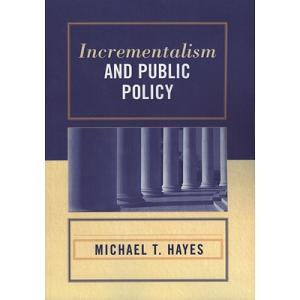
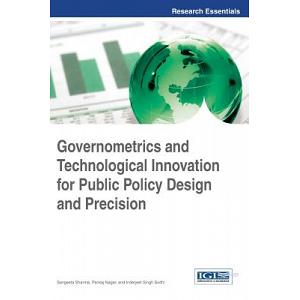
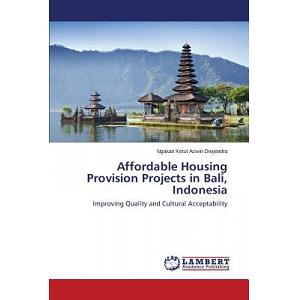
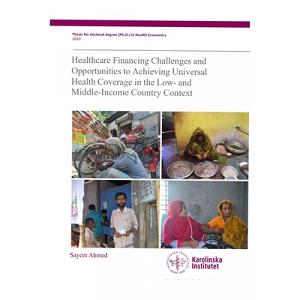
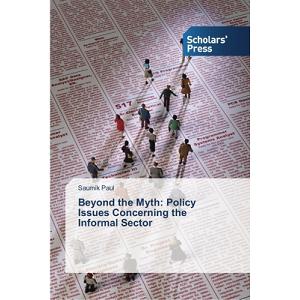
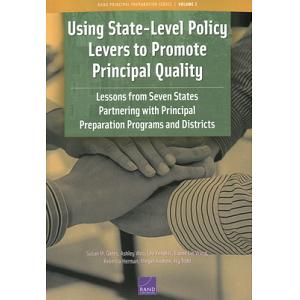

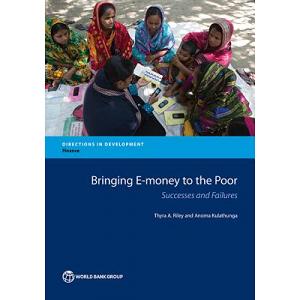
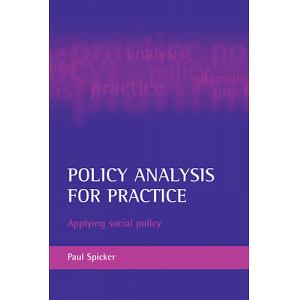
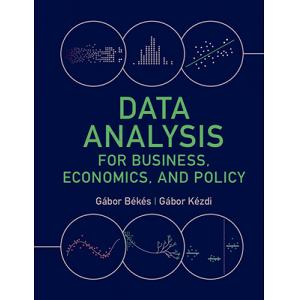
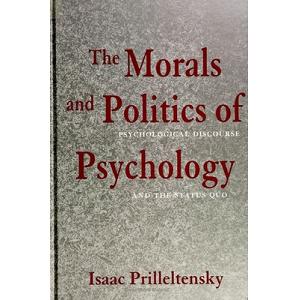
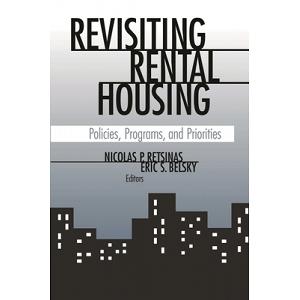
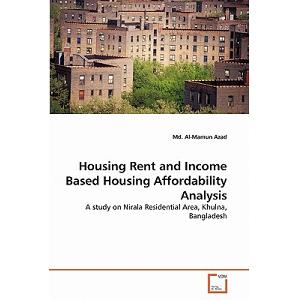
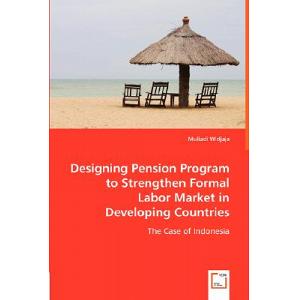
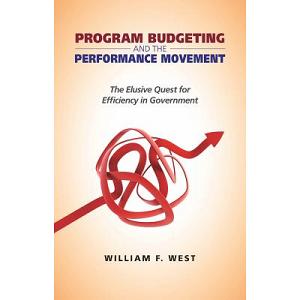

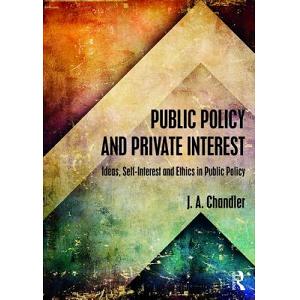

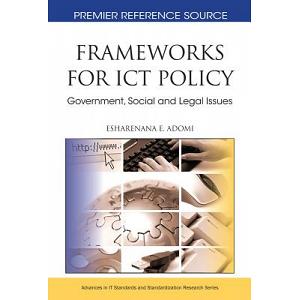


No comments:
Post a Comment